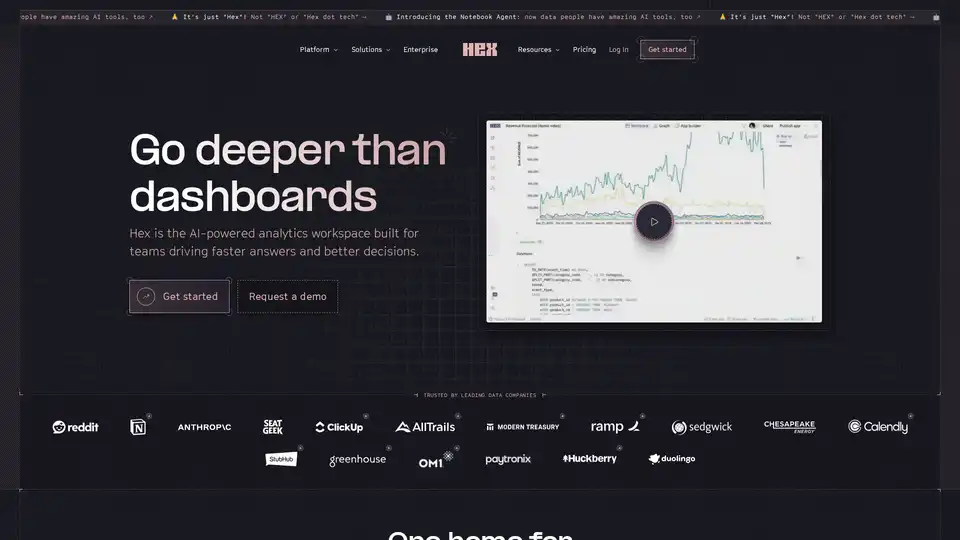
Hex
Overview of Hex
What is Hex?
Hex is an innovative AI-powered analytics workspace that goes beyond traditional dashboards, enabling teams to collaborate seamlessly on data exploration, analysis, and decision-making. Built specifically for modern data teams, Hex combines the flexibility of notebooks with AI-driven tools to help users query, visualize, and act on data without the silos that plague conventional tools. Whether you're a data scientist diving into complex models or a business analyst seeking quick insights, Hex provides a unified platform where Python, SQL, and no-code interfaces coexist harmoniously.
At its core, Hex addresses the limitations of fragmented analytics environments by offering a single home for notebooks, data apps, and self-serve exploration. Trusted by leading companies like Notion, ClickUp, and StubHub, Hex empowers users to turn raw data into actionable intelligence, fostering a culture of data-driven decisions across organizations.
How Does Hex Work?
Hex operates as a collaborative, AI-enhanced platform that integrates seamlessly with your existing data stack. The process begins with instant connections to popular data warehouses like Snowflake, BigQuery, and dbt, allowing users to pull in data effortlessly via out-of-the-box integrations or flexible APIs. Once connected, the workspace unfolds into several key components:
Notebooks for Deep-Dive Analysis: Hex's notebooks blend SQL querying, Python scripting, and no-code visualization in a multiplayer environment. Users can switch between code and visual tools without context-switching, enabling exploratory analysis from ad-hoc questions to full-scale investigations. For instance, you can run a SQL query to fetch data, apply Python for machine learning predictions, and instantly visualize results—all in real-time collaboration with teammates.
AI and Agents for Intelligent Assistance: Powered by leading large language models (LLMs), Hex's Notebook Agent and conversational interface translate natural language prompts into actionable queries, charts, and insights. Ask 'What's the trend in customer churn?' and the AI generates SQL or Python code, semantic models ensure data consistency, and results appear in seconds. This agentic self-service reduces dependency on technical experts, making advanced analytics accessible to all.
Data Apps for Interactive Experiences: Transform static analyses into dynamic, shareable apps using drag-and-drop components. Add user inputs, enable write-backs to databases, and integrate live models for real-time interactions. This turns one-off explorations into reusable building blocks, shortening feedback loops and driving faster decisions.
Self-Serve Exploration: For non-technical users, Hex's Explore feature offers a point-and-click interface on top of governed, semantic data models. Business teams can filter, pivot, and drill down without writing code, while data teams maintain control over definitions and quality.
Security is baked in from the ground up, with SOC2 compliance, HIPAA support, SSO via Okta or Azure AD, and options for single-tenant or private cloud deployments. Version control, real-time commenting, and GitHub exports ensure auditability and team alignment.
Core Features of Hex
Hex stands out with its suite of features tailored for collaborative intelligence:
- Integrated Toolkit: No more tool-hopping—query with SQL/Python, predict with ML libraries, transform data, and visualize interactively in one notebook.
- Magical AI Integration: Prompt-based assistance for code generation, data summarization, and anomaly detection, leveraging LLMs for accuracy and speed.
- Multiplayer Collaboration: Edit in real-time, endorse trusted data, and build reusable components to scale efforts across projects.
- Semantic Models and Trusted Data: Define consistent metrics once, reuse everywhere, unlocking reliable self-service without governance headaches.
- Instant Integrations: Connect to dbt for metadata, Snowpark for scalable Python execution, and orchestration tools like Airflow for workflows.
- Embedded Analytics: Securely embed apps into customer portals or internal tools, providing tailored data experiences.
These features make Hex ideal for handling everything from exploratory data analysis to operationalizing data science projects.
Main Use Cases and Practical Value
Hex shines in scenarios where speed, collaboration, and scalability are paramount:
Data Exploration and Ad-Hoc Analysis: Teams can quickly prototype ideas, like sentiment analysis on customer feedback or time-series forecasting for sales trends, using templates for data clustering, NLP, or KPI dashboards.
Building Interactive Data Apps: Marketing teams turn scattered metrics into growth opportunity dashboards, while sales uses them for pipeline forecasting. Customer success builds health views to predict churn, as seen in ClickUp's million-dollar savings from precise models.
Self-Serve Empowerment: Non-technical users in product or engineering teams explore data independently, freeing data specialists for strategic work. Notion, for example, uses Hex to democratize data access, enabling anyone to answer questions without SQL expertise.
Enterprise-Scale Analytics: For larger orgs, Hex supports embedded experiences and AI-driven agents for complex workflows, like Huckberry's replenishment models generating over a million in value.
The practical value is clear: Hex accelerates time-to-insight, reduces costs by minimizing ad-hoc requests, and boosts credibility of data outputs. Users report churning out analyses faster, decentralizing analytics, and focusing on high-impact projects—ultimately driving revenue and efficiency.
Who is Hex For?
Hex is designed for data-centric teams in fast-paced environments:
- Data Leaders and Analysts: To scale self-service, enforce governance, and collaborate on deep dives without silos.
- Product and Marketing Professionals: Building data-informed strategies, from user segmentation to performance tracking.
- Sales and Customer Success Teams: Creating clear views for forecasts, health scores, and proactive interventions.
- Engineers and Developers: Leveraging Python/SQL integrations for ML, automation, and app development.
It's particularly suited for mid-to-large enterprises using warehouses like Snowflake, where cross-functional data use is key. Even startups benefit from its free tier for rapid prototyping.
Why Choose Hex?
In a crowded analytics market, Hex differentiates with its AI-native approach and focus on collaboration. Unlike rigid BI tools, it supports the full analytics lifecycle—from question to app—in one secure, scalable space. Customer stories highlight its impact: StubHub realigned stacks for speed, Modern Treasury empowered non-data teams, and Om1 supercharged Snowflake workflows.
G2 ratings praise its ease for business users and sustainability for data teams. With templates for common tasks like exploratory analysis or data visualization, getting started is straightforward: connect your data, explore a notebook, and build.
Best Ways to Get Started with Hex
- Sign Up for Free: Connect to your warehouse and try pre-built templates for sentiment analysis or KPI dashboards.
- Explore AI Features: Use the Notebook Agent for prompt-based queries to see instant value.
- Build and Share: Convert a notebook into a data app and collaborate in real-time.
- Scale with Enterprise Options: Request a demo for custom integrations and security setups.
Hex isn't just a tool—it's a workspace that transforms how teams interact with data, making analytics a team sport that delivers measurable business outcomes.
Best Alternative Tools to "Hex"
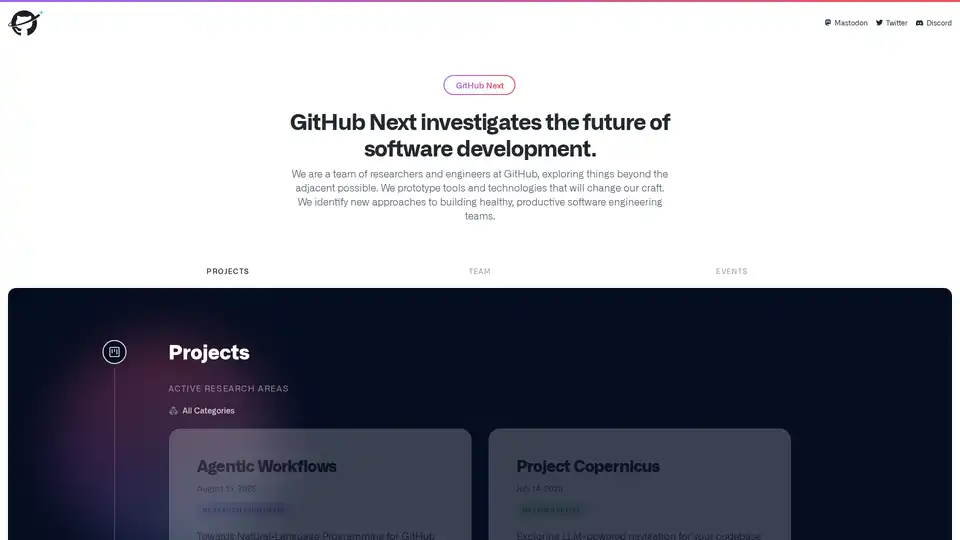
GitHub Next explores the future of software development by prototyping tools and technologies that will change our craft. They identify new approaches to building healthy, productive software engineering teams.
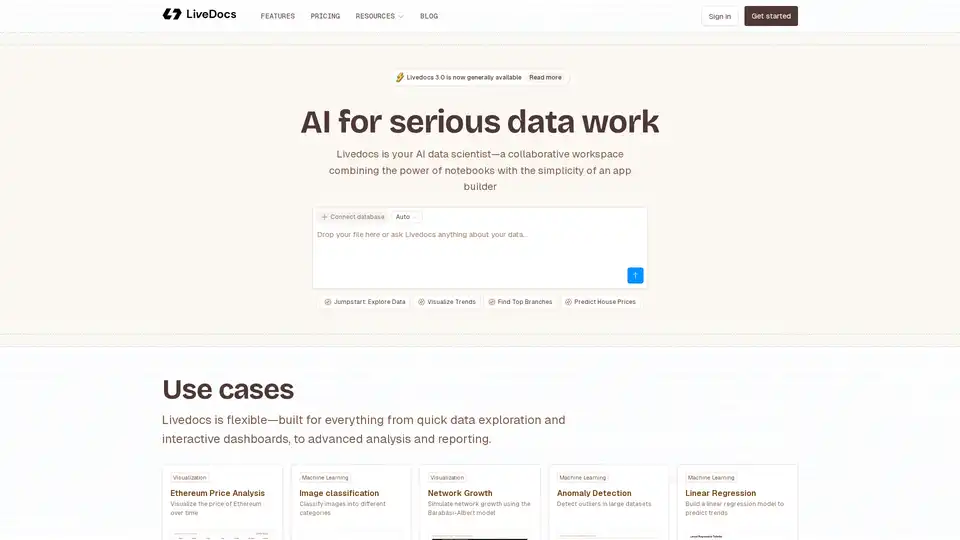
Livedocs is your AI data scientist, a collaborative workspace that combines the power of notebooks with the simplicity of an app builder. Use it for data exploration, visualization, and machine learning.
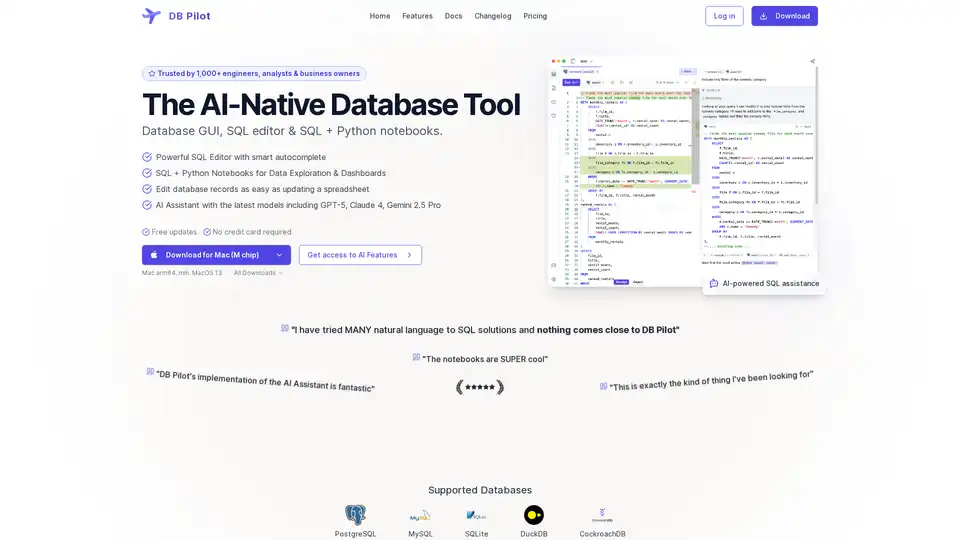
DB Pilot is an AI-native database tool offering a powerful SQL editor, SQL + Python notebooks, and an AI assistant with the latest models for faster and easier database work.
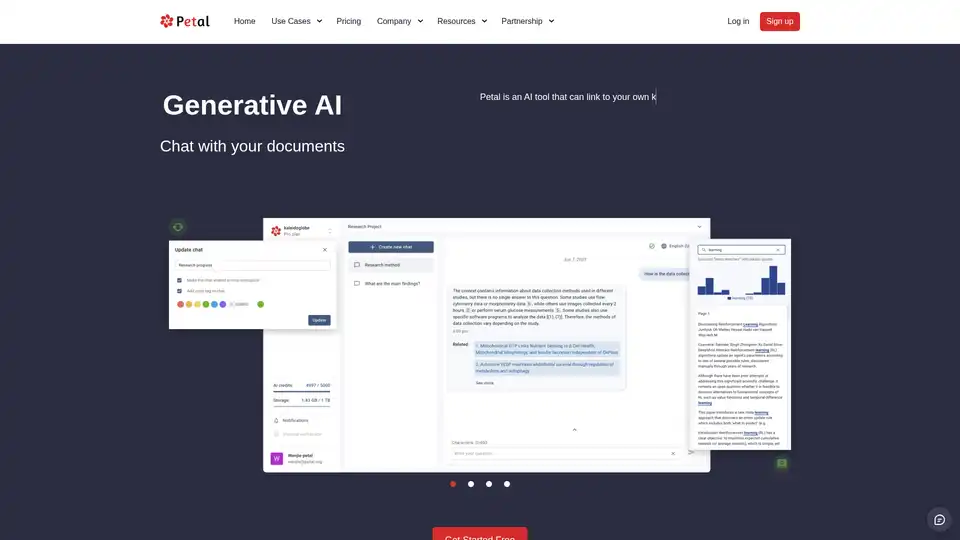
Petal is an AI-powered platform for chatting with documents, providing accurate answers, summaries, translations, and collaboration tools. Ideal for researchers in academia, R&D, and industry to analyze and organize knowledge efficiently.

YouTube-to-Chatbot is an open-source Python notebook that trains AI chatbots on entire YouTube channels using OpenAI, LangChain, and Pinecone. Ideal for creators to build engaging conversational agents from video content.

CEBRA is a self-supervised AI algorithm that jointly analyzes behavioral and neural data to create consistent, interpretable latent embeddings for neuroscience research, enabling accurate decoding of positions, videos, and movements across species.

AnimateDiff is a free online video maker that brings motion to AI-generated visuals. Create animations from text prompts or animate existing images with natural movements learned from real videos. This plug-and-play framework adds video capabilities to diffusion models like Stable Diffusion without retraining. Explore the future of AI content creation with AnimateDiff's text-to-video and image-to-video generation tools.
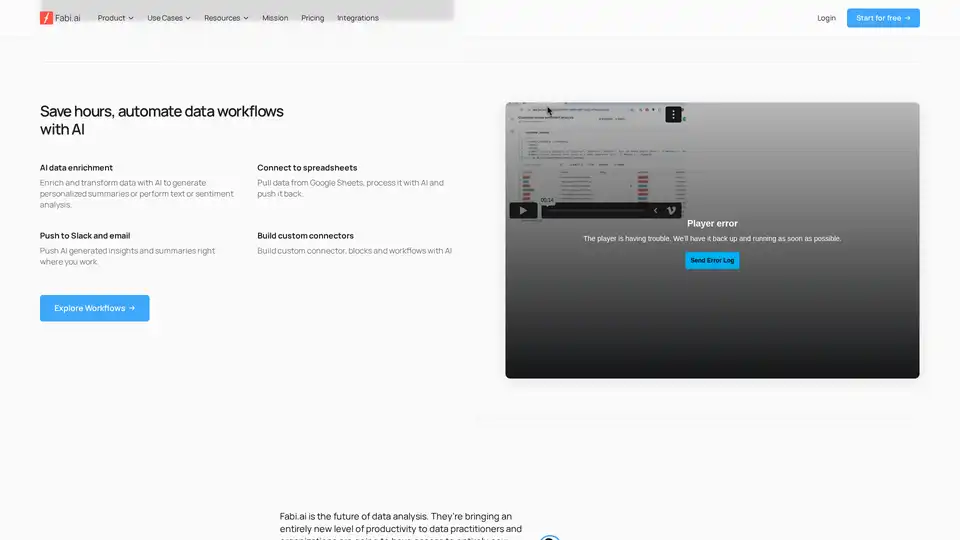
Transform complex data analysis with Fabi.ai's all-in-one AI platform. Combine SQL, Python, and AI automation for faster insights, dashboards, and workflows from your data sources like Google Sheets and warehouses.
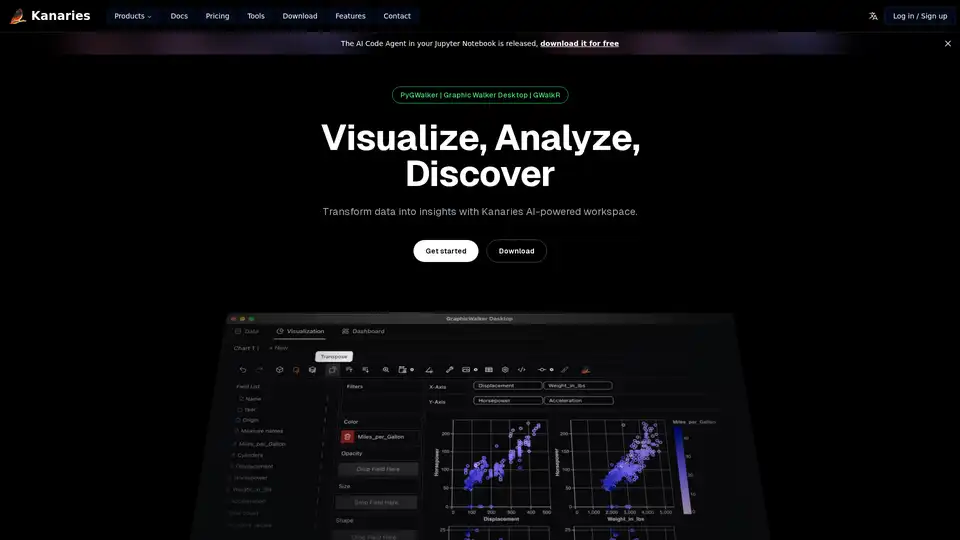
Make exploratory data analysis (EDA) easier with AI powered visual analytics. Discover, Analyze and Share data insights with ease.
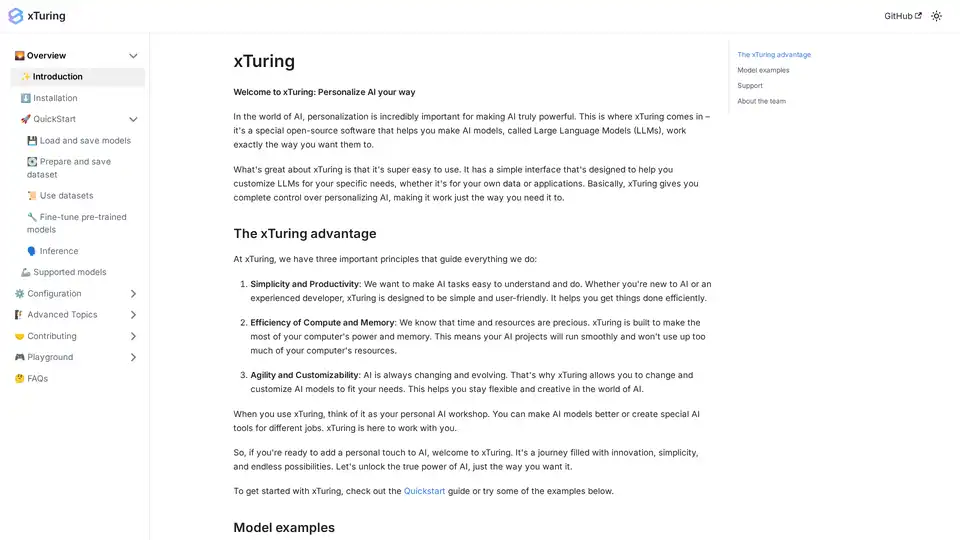
xTuring is an open-source library that empowers users to customize and fine-tune Large Language Models (LLMs) efficiently, focusing on simplicity, resource optimization, and flexibility for AI personalization.
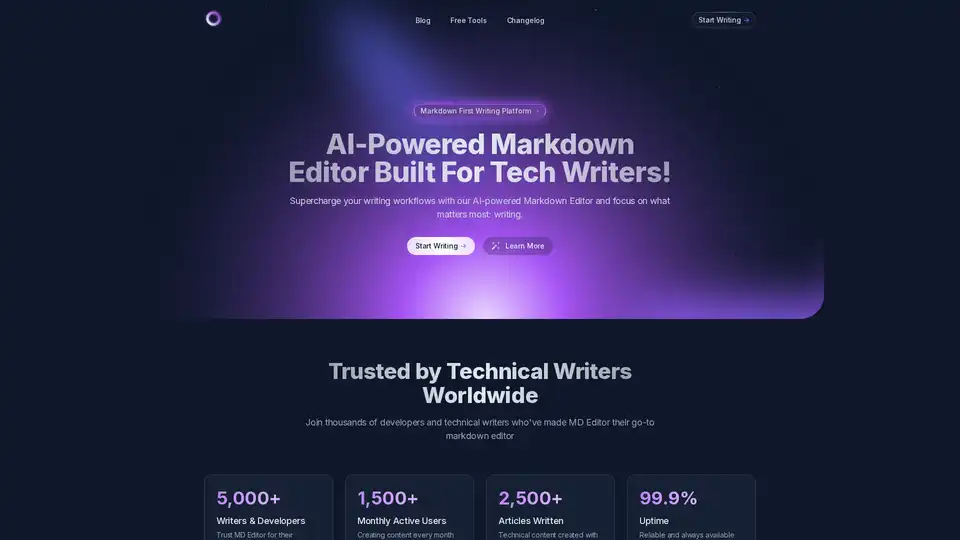
Supercharge your technical writing with MD Editor - the AI-powered markdown editor designed for developers, technical writers, and content creators. Enhanced table support, CSV import, visual editing, and intelligent writing assistance.

Quantum Copilot is an AI-assisted tool for quantum computing, enabling users to program in plain language, generate quantum code, simulate circuits, and run on real hardware for beginners and experts alike.

Automate Python spreadsheet tasks with Mito, an open-source tool that converts spreadsheet edits to Python code. Integrates AI for chat, debugging and data analysis in Jupyter.
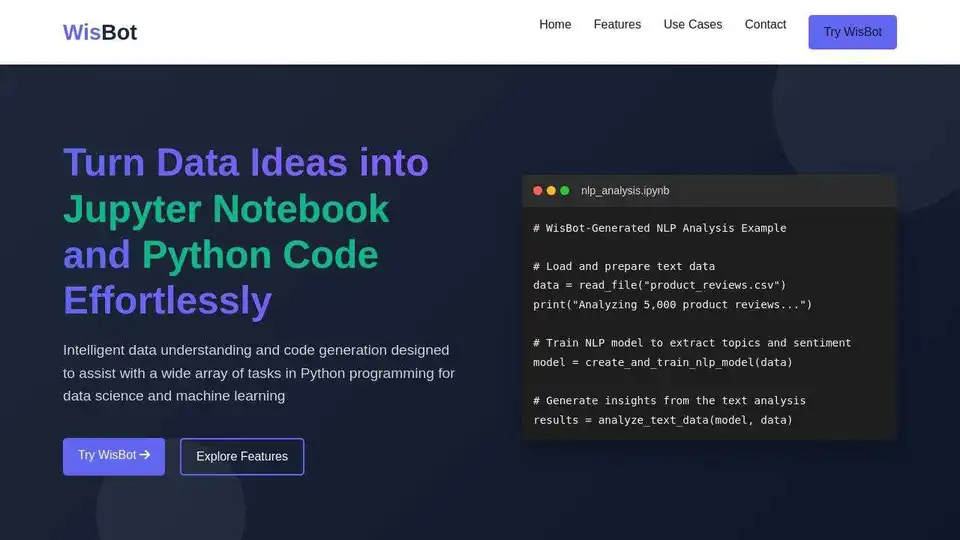
WisBot is an AI co-inventor for data discovery. Upload data, get executed Jupyter notebooks, trained ML models, and production-ready code in minutes. Skip the setup, get straight to insights.
